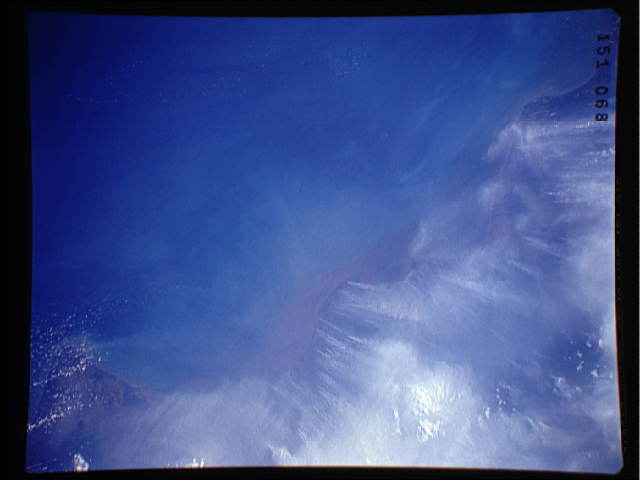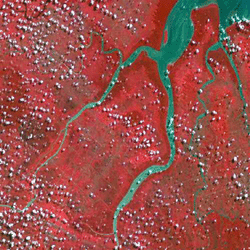Haze in Malaysia worsens, may last until October
Rhett A. Butler, mongabay.com
August 11, 2005

FEB. 2005: For several weeks, fires have been burning on the eastern side of the Indonesian island of Sumatra, filling the skies in the region with thick smoke that nearly hides the island from a satellite-based view. The haze reaches northward to mainland Malaysia as well. This image of the island was captured by the Moderate Resolution Imaging Spectroradiometer (MODIS) on NASA’s Terra satellite on February 24, 2005. Active fire locations detected by MODIS have been marked in red.
Malaysia’s Prime Minister declared a state of emergency, closing ports and workplaces and calling on mosque-goers to pray for rain to clear the polluting haze coming from massive forest fires in nearby Indonesia. Meteorologists believe conditions are ripe for the haze to last well into October when rains are next expected.
Hundreds of forest fires on the island of Sumatra have caused a hazardous haze that has sent tourists packing and resulted in widespread respiratory problems. The impact on the Malaysian economy is expected to be tremendous — the 1997-98 caused an estimated $9.3 billion in economic losses for the region.
The haze — formed when sulphides, nitrous oxides, and ash released by burning are combined with the industrial pollution and exhaust from cities — has pushed the air pollution index to 500 for the first time in peninsular Malaysia, a level at which people are warned to avoid all physical activity outdoors and people with heart or lung disease, adults over 45 years, and children are urged to remain indoors and keep activity levels to a minimum [a day’s exposure to an API of 200-300 is the equivalent to smoking 20 cigarettes]. During the 1997-1998 haze, over 200,000 people were hospitalized with ailments ranging from heart and respiratory disorders, severe nosebleeds, and eye irritation. Health officials worry that the smog produced by the fires may lead to an increase in the development of heart, lung, brain, eye, and skin disorders over the next decade.
 Fires in Borneo on the southern coast of Kalimantan. Second photo Picture courtesy of the Image Science and Analysis Laboratory, NASA-Johnson Space Center. 2 Nov. 2004. “Earth Sciences and Image Analysis Photographic Highlights.” (20 Apr. 2005). |
Forest fires in Indonesia are an annual occurrence and Malaysian officials have long expressed frustration over Indonesia’s failure to address the problem. Fires are set for land-clearing purposes often for palm oil plantations and agricultural development. While fire setting in illegal in some parts of Indonesia, forestry laws are often poorly enforced.
|
|
This news brief used information from the Associated Press.
Haze pictures from NASA, Cause of the haze in Malaysia, Fires responsible for pollution in Malaysia, Haze blamed on Indonesian forest fires.

